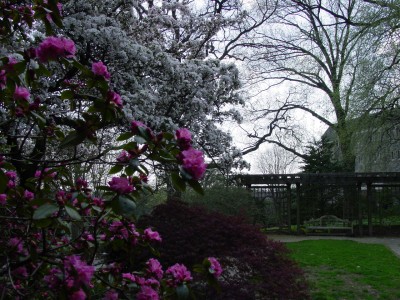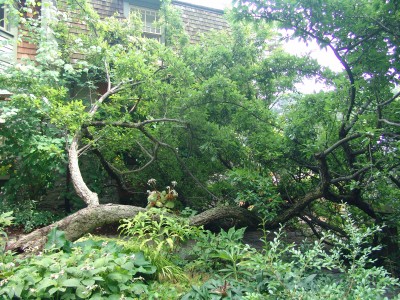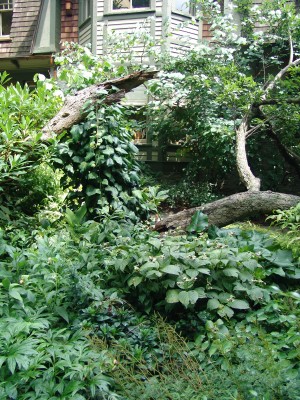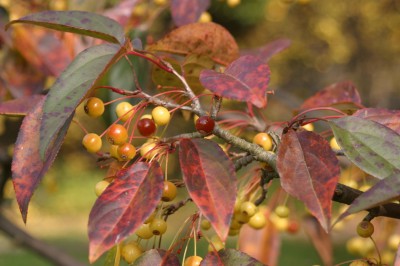Big Changes in the Garden
Gardens are always changing. As the trees grow, your sunny spots turn into shady locations. With the demise of a shade tree, your luscious shade garden is exposed to the harsh summer sun and you will have to rethink that area of your garden.
The Terry Shane Teaching Garden experienced this dramatic type of garden change with the loss of the Malus hupehensis this past weekend. The crabapple lost the first section of its multi-stemmed trunk in 2005. The Collections Committee decided to leave the remaining portion of the tree despite the realization that it was in decline. They took the opportunity to grow a variety of ornamental vines, like Hedera colchinca ‘Sulphur Heart’, on the stump of the collapsed portion of the tree.
This weekend, the heavy rains were the final straw for this elderly tree. This crabapple graced the grounds before the establishment of the Arboretum in 1929. It was most likely planted by a resident of the Cunningham House long before it became part of the Scott Arboretum and a dramatic component of the Terry Shane Teaching Garden.
Claire Sawyers often received compliments on the tree because of the attractive view from her office windows. With the demise of the tree, she commented on how she will miss the sensation of floating among pink clouds, as she often described the view when the crabapple bloomed each spring. This tree also offered plenty of attractive fruit for birds, thus creating some great wildlife sightings from the second floor of the Scott Arboretum Offices.
With the removal of the tree, the collections committee will make a decision about what to do with the Terry Shane Teaching Garden next. What are your ideas for the Terry Shane Teaching Garden? I would love to hear them. Please submit your comments below and I will pass them along to the collections committee.









No Comments